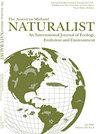A Trophic Cascade Following the Introduction of an Omnivorous Fish, Dorosoma cepedianum, in a Mid-continental Reservoir (Mozingo Studies IV)
IF 0.6
4区 环境科学与生态学
Q4 Agricultural and Biological Sciences
引用次数: 0
Abstract
Abstract. Mozingo Lake, a reservoir in the mid-continental United States, was sampled 63 times between January 1999 and October 2015. Prior to 2005, phytoplankton biovolume was largely composed of Cryptomonas and cyanobacteria (mostly Aphanizomenon); these taxa correlated with the abundance of Daphnia and juvenile copepods, and were also influenced by competition between cyanobacteria and bacillariophytes. These relationships suggest the zooplankton community was primarily controlled by bottom-up processes during this time. In 2005, gizzard shad (Dorosoma cepedianum) first appeared in the lake, coinciding with the first spined and helmeted forms of Daphnia as well as their decline from 39% to 3% of zooplankton; the relative abundance of juvenile copepods increased concurrently. By 2007 phytoplankton biovolume had decreased by 88%. Although all phytoplankton phyla declined in absolute abundance, some were more heavily impacted. The relative abundance of Aphanizomenon declined from 50% to 6% of the phytoplankton biovolume; Cryptomonas remained common, but bacillariophytes became codominant. Despite the steep decline in phytoplankton biovolume, several important trophic interactions did not change: phytoplankton biovolume continued to control juvenile copepods, and competition continued between cyanobacteria and bacillariophytes. Although juvenile copepods continued to compete with Daphnia, the scarcity of the latter allowed a relative expansion of juvenile copepods and bacillariophytes. Because very few of the standard parameters correlated with phytoplankton, it seems likely that most of the changes were caused by the introduction of gizzard shad, which is an intense consumer of cyanobacteria and Daphnia. Gizzard shad likely initiated a trophic cascade both directly (through consumption) and indirectly (by shifting competition). Although other factors may have played a role, it seems clear that the introduction of gizzard shad can cause dramatic changes in both the zooplankton and phytoplankton communities by altering species relationships in top-down, bottom-up, as well as lateral control processes.在大陆中部水库引入杂食性鱼类多罗索马(Dorosoma cepedianum)后的营养级联
摘要1999年1月至2015年10月,美国中部大陆的一个水库莫津戈湖被采样了63次。在2005年之前,浮游植物的生物量主要由隐单胞菌和蓝细菌组成(主要是Aphanizaomenon);这些类群与水蚤和幼年桡足类的丰度相关,也受到蓝藻和细菌之间竞争的影响。这些关系表明,在此期间,浮游动物群落主要受自下而上的过程控制。2005年,砂鱼(Dorosoma cepedianum)首次出现在湖中,与Daphnia的第一种带刺和头盔的形态相吻合,它们在浮游动物中的比例从39%下降到3%;幼年桡足类的相对丰度同时增加。到2007年,浮游植物生物量减少了88%。尽管所有浮游植物门的绝对丰度都有所下降,但其中一些受到了更严重的影响。Aphanizaomenon的相对丰度从浮游植物生物量的50%下降到6%;隐单胞菌仍然很常见,但细菌体成为共显性。尽管浮游植物生物量急剧下降,但几个重要的营养相互作用没有改变:浮游植物生物量继续控制幼年桡足类,蓝藻和细菌之间的竞争仍在继续。尽管幼年桡足类继续与水蚤竞争,但后者的稀缺性允许幼年桡足纲和细菌植物的相对扩张。由于很少有标准参数与浮游植物相关,因此大多数变化似乎是由砂鱼的引入引起的,砂鱼是蓝藻和水蚤的主要消费群体。沙鱼很可能直接(通过消费)和间接(通过转变竞争)引发了营养级联。尽管其他因素可能也起到了一定作用,但很明显,砂鱼的引入会通过自上而下、自下而上以及横向控制过程改变物种关系,从而导致浮游动物和浮游植物群落的急剧变化。
本文章由计算机程序翻译,如有差异,请以英文原文为准。
求助全文
约1分钟内获得全文
求助全文
来源期刊

American Midland Naturalist
环境科学-生态学
CiteScore
1.20
自引率
0.00%
发文量
38
审稿时长
18-36 weeks
期刊介绍:
The American Midland Naturalist has been published for 90 years by the University of Notre Dame. The connotations of Midland and Naturalist have broadened and its geographic coverage now includes North America with occasional articles from other continents. The old image of naturalist has changed and the journal publishes what Charles Elton aptly termed "scientific natural history" including field and experimental biology. Its significance and breadth of coverage are evident in that the American Midland Naturalist is among the most frequently cited journals in publications on ecology, mammalogy, herpetology, ornithology, ichthyology, parasitology, aquatic and invertebrate biology and other biological disciplines.
 求助内容:
求助内容: 应助结果提醒方式:
应助结果提醒方式:


